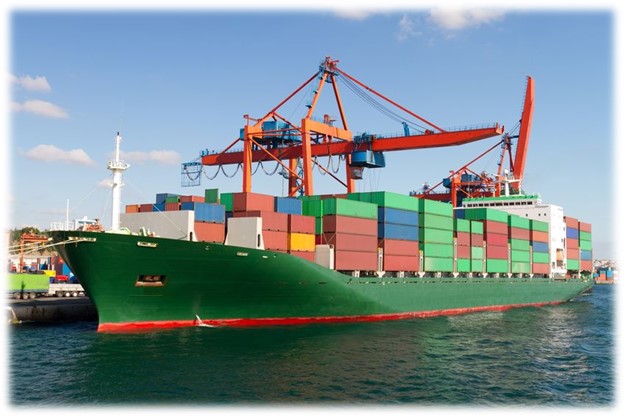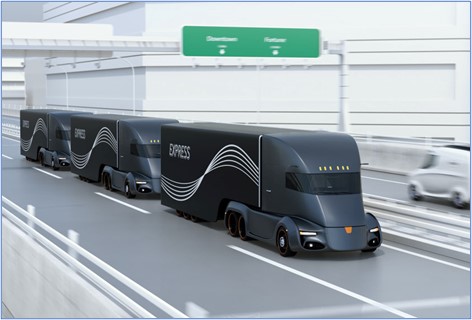It’s a Brave New World for ground transport. The trucking industry faces many challenges, perhaps more than ever before. But that’s a reason for cautious optimism because those challenges also present opportunities.
By tackling supply chains’ many issues, as a shipper you can update your supply chain for the Brave New World.
Efficient ground transport plays a huge role in keeping supply chains running smoothly. That means preventing or mitigating disruptions and dislocations, while improving service.
Besides that, efficient ground transport includes providing unmatched customer service and support. Lastly, opportunities abound in shift to offering sustainable ground transport solutions.
This post will delve into potential opportunities from the labor shortage. It will also consider emerging technologies and new business practices for opportunities. Finally, this post will address the benefits these opportunities have to offer.
Let’s get started.
Solving the Labor Shortage
The labor shortage has affected the trucking industry since 1990. The industry just can’t seem to shake this problem. And the pandemic exacerbated that problem.
The question remains whether the trucking industry can solve this problem… ever?
It turns out, many possible solutions, working together may, however, end the labor shortage.
- Expanding the Hiring of Women. Trucking is a historically male-dominated business. But, with today’s changing culture where you can work in any field you desire, we will likely see more women in trucking.
Today, women comprise 7% of the driver population. Yet women make up about 51% of the U.S. population. Hiring more women, can make some inroads into the labor shortage.
To that end, the Women in Trucking Association is working to grow women ‘s presence in trucking.
- Automated Vehicles (AVs). AV driverless trucks are being designed, manufactured, and tested. Over time, driverless can alleviate the driver shortage.
Yet some driverless trucks aren’t completely driverless. Some will require a human driver to override the auto-piloting of a truck as a safety precaution.
In some cases, two assistant drivers are on board. One serves as an assistant driver and the other is a software engineer. The latter is on board to correct any software glitches. But AVs can reduce the need for drivers, especially in convoys with one driver in the lead truck and one at the rear.
- The Rise of E-Commerce and the Use of Drones. Besides AV systems, drones offer some relief in the last-mile delivery market. Championed by Amazon, drones are growing, becoming a standard mode of delivery.
As drones become more widely adopted, they will improve performance delivery metrics. Also, drones may provide enough relief to mitigate the driver shortage.
In addition to alleviating the driver shortage, technology plays a major role in improving performance
Emerging Technologies that Improve Efficiency and Effectiveness
- Optimized Transportation Networks. One issue foiling a solution to the labor shortage is inefficient transportation operations. As mentioned in a previous post, if each driver drove an extra 12 minutes per day, the driver shortage would end. That’s according to an MIT study. So, incredibly, better transportation management systems can help end the labor shortage.
- Transparency and End-to-End Visibility (E2E). These have been longtime goals in supply chain management. Now, as a result of the pandemic, more businesses are adopting E2E technologies. The value of adopting this technology lies in the agility it builds into supply chains.
E2E visibility can enable real-time decision-making. That can enable rerouting trucks from traffic jams/accidents. That helps avoid wasted time and late deliveries. And that helps keep a lid on increased costs. In other words, real-time visibility is a definite game changer.
- The Rise of Additive Manufacturing (3D Printing). 3D printing is a new, disruptive technology that’s beginning to make its presence felt. 3D printing capabilities are growing, printing anything from spare parts to pizzas.
This innovation benefits the trucking industry and supply chains by printing items on-demand. That cuts down on ordering, transportation, stockage, and inventorying among other things.
Like E2E visibility, this capability is also a game changer that can curtail the demand for transportation.
Adopting New Business Practices that Improve Customer Service
Technology always seems to occupy the spotlight when it comes to innovation. However, business practices drive technology, not the other way around.
- Changing Supply Chain Business Practices. One change in business practice is the redesigning of transportation networks by improving customer service. The following criteria define that by focusing on (1) reliability, (2) transit time, (3) efficiency, (4) cost and damage minimization.
So, the emphasis of new business practices is changing from cost to quality. Its focus is on providing elevated levels of service with higher quality at reduced cost – in that order. (Freight Management Operations)
These changes should benefit the driver as companies engage in long-term partnerships. Long-term commitments with trucking firms/3PLs can result in more consistent work for drivers.
We also see a rise in government interest in changing supply chain business practices.
Government Regulation and Sustainability that Enhances Competitive Advantage
Environmental issues are gaining increased attention by government. The government for its part
has concerned itself with pollution and energy scarcity. That includes: “…climate change, carbon emissions, biodiversity, air and water quality, deforestation, and waste management”. (Sphera)
Here are two areas impacting the trucking industry.
- The Design and Manufacture of Fuel-efficient Engines
- The Increased Regulatory Emphasis on Alternative Fuels
“Green” initiatives are part of the Brave New World. It’s driving change more and more every day. For example, due to increased government regulation, the industry is now manufacturing Class 8 trucks averaging 10.1 miles per gallon.
In addition to the manufacture of more fuel-efficient engines, retrofitting engines is also becoming popular. According to the Alternative Fuels Data Center, OEMs can convert engines to use propane, natural gas, or electricity.
Regulation has also led to the creation of alternative fuels. Some examples are biodiesel, ethanol, natural gas, and renewable diesel, to name a few.
Besides governmental interest in these initiatives, private companies are moving forward because they see progress on these “Green” issues as a competitive advantage.
Share this entry







